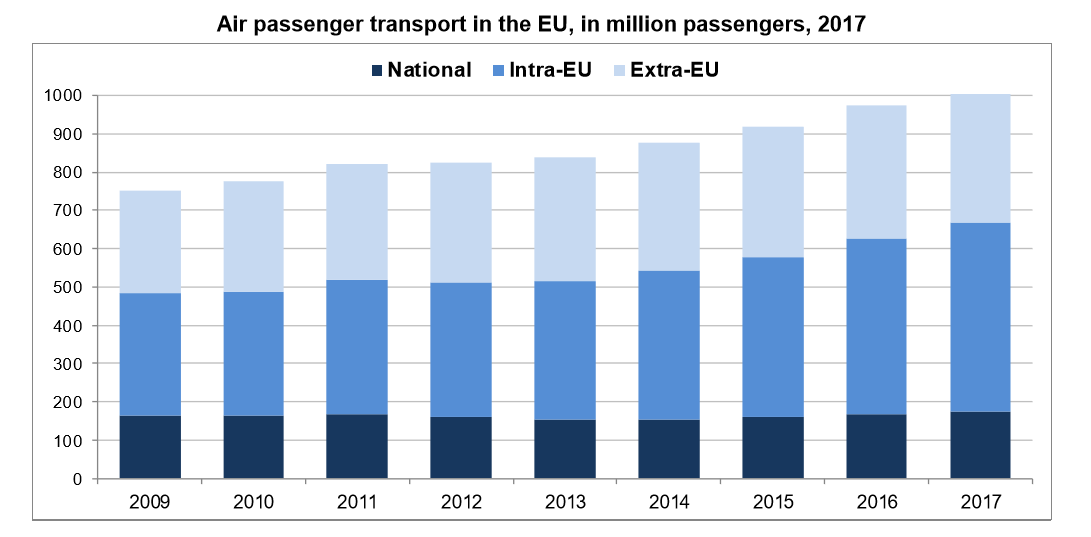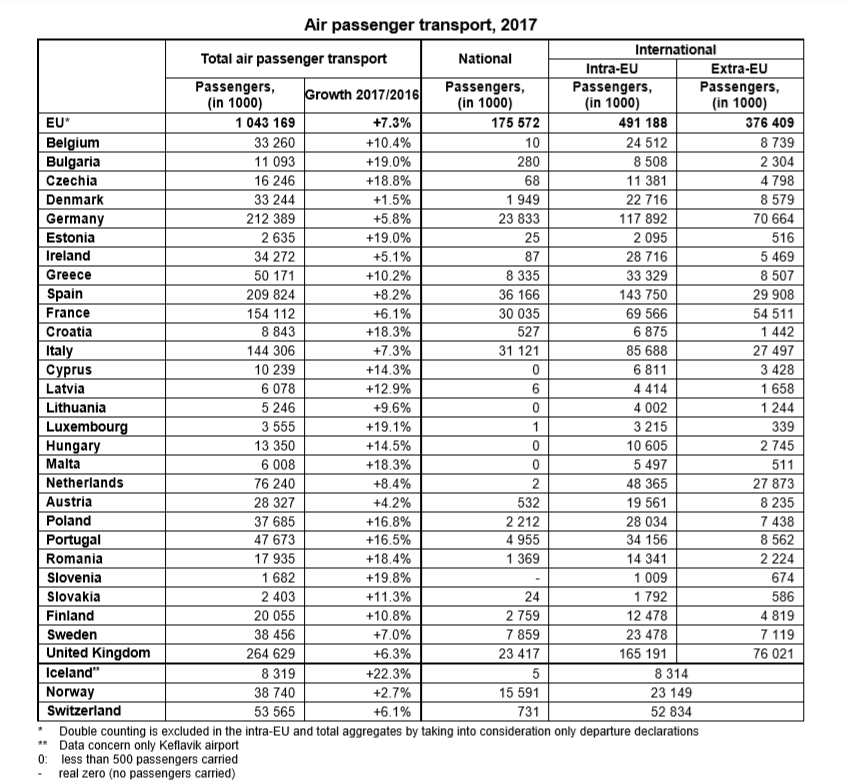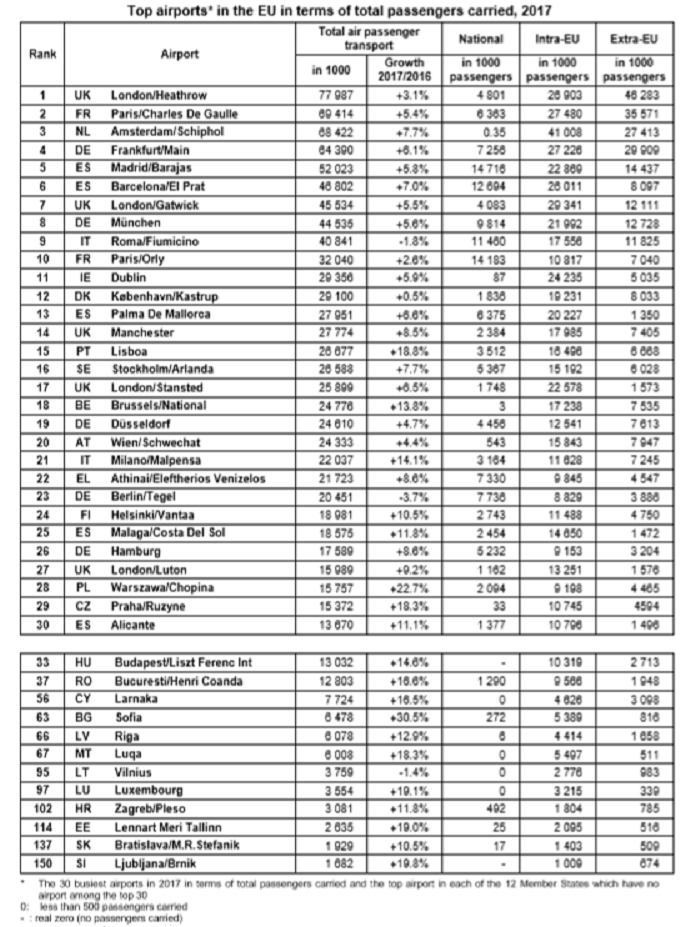A record of over 1 billion air passengers travelled by air in the European Union in 2017. In 2017, 1.04 billion passengers travelled by air in the European Union (EU), up by 7% compared with 2016 and by 39% compared with 2009.
In 2017, intra-EU transport represented almost half (47%) of total air passenger transport in the EU and extra-EU transport over a third (36%), while national transport accounted for fewer than 1 in every 5 passengers (17%).

In 2017, the largest number of air passengers was recorded in the United Kingdom (265 million passengers), followed by Germany (212 million), Spain (210 million), France (154 million) and Italy (144 million).
The number of air passengers carried in 2017 rose in all EU Member States compared with 2016. The highest increases were registered in Slovenia (+20%), Luxembourg, Estonia, Bulgaria and Czechia (all +19%), Romania, Croatia and Malta (all +18%), ahead of Poland and Portugal (both +17%).
Among the top 5 Member States in terms of air passengers transported in 2017, the highest increases were registered in Spain (+8%) and the United Kingdom (+6%). Overall in the EU, the number of air passengers rose by 70.5 million (+7%) between 2016 and 2017, driven by the rise in extra-EU (+9%) and intra-EU transport (+7%).

London/Heathrow remained the EU’s busiest passenger airport in 2017, with 78 million passengers handled, slightly up (+3%) compared with 2016. Paris/Charles de Gaulle (69 million, +5%), Amsterdam/Schiphol (68 million, +8%), Frankfurt/Main (64 million, +6%) and Madrid/Barajas (52 million, +6%) completed the top 5 of the busiest airports in the EU.
They were followed by Barcelona/El Prat (47 million, +7%), London/Gatwick (46 million, +6%), München (45 million, +6%) and Roma/Fiumicino (41 million, -2%). Each of the top 30 EU airports registered an increase in the number of passengers handled in 2017, except Berlin/Tegel (-4%) and Roma/Fiumicino (-2%).
The highest rises among the top 30 EU airports were registered in (Warszawa/Chopina (+23%), ahead of Lisbon and Praha/Ruzyne (both +19%), Milano/Malpensa and Brussels/National (both +14%), Malaga/Costa del Sol (+12%), Alicante and Helsinki/Vantaa (both +11%).
In 2017, London/Heathrow (46 million) handled the most passengers on extra-EU transport and Amsterdam/Schiphol (41 million) the most on intra-EU transport, while Madrid/Bajaras (15 million) led for national transport.

The European Union (EU) currently includes Belgium, Bulgaria, Czechia, Denmark, Germany, Estonia, Ireland, Greece, Spain, France, Croatia, Italy, Cyprus, Latvia, Lithuania, Luxembourg, Hungary, Malta, the Netherlands, Austria, Poland, Portugal, Romania, Slovenia, Slovakia, Finland, Sweden and the United Kingdom.
Related:
Some insights into the current and future economic state of airlines